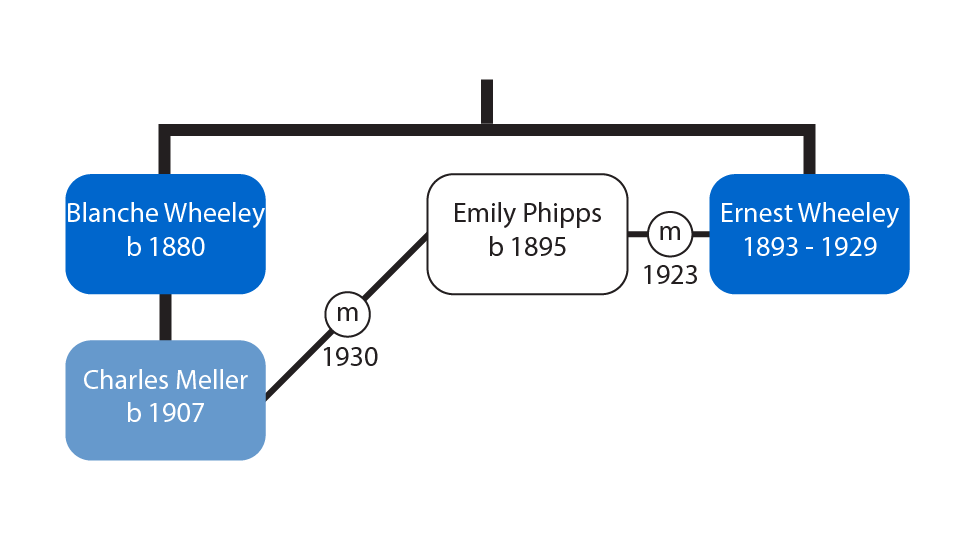While researching some extended family members, I came across an unusual marriage.
Ernest Wheeley and Emily Marian Phipps were married in 1923 and their daughter, Cissie was born the following year. Sadly, Ernest died only a few years later in 1929 and Emily married the next year. Although a widow remarrying is very common and can be expected, what makes this case unusual is that Emily had married the nephew of her deceased husband.
Ernest’s nephew, Charles Meller – who was was roughly 12 years younger than Emily – was the son of his sister Blanche Wheeley and Joseph Meller.

There has long been a list of ‘forbidden marriages’ based on the bible. Way back in 1503, even King Henry VIII had to request a special dispensation so he could marry his brother Arthur’s widow, Katherine of Aragon. In 1907 the law changed to allow marriage to a wife’s sister or husband’s brother but only if the first spouse was deceased. In 1921, marriage to a brother’s wife or sister’s husband also became legal (only if the first spouse was deceased). This change in law likely came about due to the dramatic reduction in population after World War I. The law was again changed in 1931 to allow marriage to an aunt/uncle-in-law or niece/nephew-in-law (again only if the relevant people were deceased). [source: Forbidden Marriage Laws of the United Kingdom] However, in this case, Charles and Emily were married in 1930 – the year before it became legal for them to do so.
By 1939, the couple had a son together, Ronald, and Cissie had taken the name of her mother’s new husband (and Cissie’s first cousin), Meller. A clue to the unusual relationship can be found on the 1939 register entry – upon Cissie’s marriage in 1943, her original name of Wheeley was added along with her new married name of Dickinson (Cissie used the name Wheeley when she married).
There could be many reasons for marrying a the spouse of a deceased family member and at times it was encouraged. It is impossible to know the nature of the couple’s relationship prior to Ernest’s death (without family anecdotes to rely on). A clue that this union may not have had the family’s blessing may lie in their address. Charles and Emily were on Hollemeadow Road, whereas the rest of the family seemed to live more closely together on or near Pleck Road (the other side of town). But, of course, this is just speculation on my part.


I found this today too – I was surprised as well, how odd that we were both looking at the same family 🙂
What a cool coincidence! Although I must confess, this post (and quite a few others) had been sitting in my drafts folder for some time. I go off on tangents so easily!